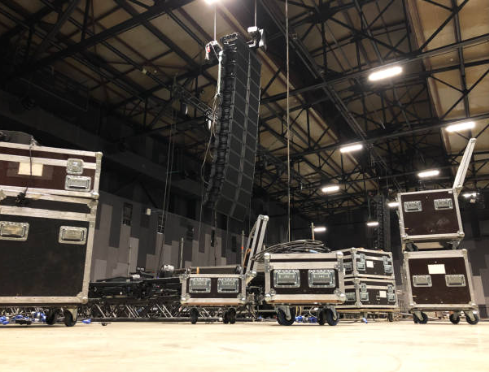I. The Manufacturing Process of Flight Cases
1.1 Material Selection
1. 2 Frame Processing
1. 3 Interior and Exterior Design
1. 4 Accessory Installation
1.5 Testing and Quality Control
II. How to Determine If You Need a Flight Case
2.1 Transporting Valuable Items
2.2 Harsh Environmental Conditions
2.3 Long-Term Storage
2.4 Frequent Transportation
III. How to Choose the Right Flight Case
3.1 Size and Shape
3.2 Material and Structure
3.3 Functional Requirements
3.4 Accessory Quality
IV. Custom Options for Flight Cases
Flight cases are highly specialized protective tools commonly used for transporting valuable equipment, sensitive items, or special materials. They serve as reliable assistants for travelers and professionals, and essential gear for various industries. But how are flight cases made? How do you determine if you need one? And how do you choose the right flight case? Here's a detailed guide to help you make an informed decision.

I. The Manufacturing Process of Flight Cases
Making a flight case isn’t a simple industrial process but involves multiple stages of design and precision manufacturing to ensure every case meets users' needs. Here are the main production steps:
1. Material Selection
The core materials of a flight case are typically aluminum alloy, ABS plastic, or composite panels. These materials are lightweight yet durable, providing shock and pressure resistance. Inside, the case is equipped with custom foam or dividers to protect items from movement or impact.
- Aluminum Alloy: Lightweight and strong, ideal for high-end flight cases.
- ABS Plastic: Lighter weight, suitable for short-distance transport or weight-sensitive scenarios.
- Composite Panels: Made from aluminum foil and multi-layer wood boards, used for larger cases.
The internal cushioning is usually made of EVA foam or high-density polyurethane, precisely cut to fit the shape of the items and provide comprehensive protection.
2. Frame Processing
The frame is the core component, often formed using aluminum alloy extrusion techniques. The frame undergoes precise cutting, shaping, and assembly to ensure structural strength and tightness.
3. Interior and Exterior Design
The exterior is typically coated with wear-resistant or metallic protective layers, while the interior can include foam padding, dividers, hooks, or other features as needed. Foam linings are cut based on the item’s specifications to ensure a snug fit and stability. Adjustable dividers can also be included for separating different items.
4. Accessory Installation
Locks, hinges, handles, and wheels are tested rigorously before installation to ensure safety and convenience. High-quality flight cases are also equipped with waterproof sealing strips for enhanced protection.
- Locks and Hinges: Ensure the case remains sealed and prevents accidental opening.
- Handles and Wheels: Enhance portability; smooth wheels are especially crucial for heavy-duty cases.
- Sealing Strips: Provide waterproof and dustproof capabilities for extreme environments.
5. Testing and Quality Control
Each flight case undergoes rigorous testing, including impact resistance, waterproofing, and durability tests, ensuring reliable performance in real-world scenarios.
II. How to Determine If You Need a Flight Case
Not everyone requires a flight case, but in the following scenarios, it may be indispensable:
1. Transporting Valuable Items
For high-value items like:
- High-end photography equipment
- Sound systems or musical instruments
- Scientific instruments
- Medical devices
The shock-resistant and pressure-proof design of a flight case minimizes damage risks during transit.
2. Harsh Environmental Conditions
Flight cases provide excellent protection in challenging environments such as:
- Humidity: Waterproof designs prevent moisture damage.
- Extreme Temperatures: Materials withstand high or low temperatures.
- Dusty or Sandy Areas: Sealing strips block external contaminants.
3. Long-Term Storage
For items requiring prolonged storage, such as valuable collectibles or archival materials, flight cases effectively guard against dust, moisture, and pests.
4. Frequent Transportation
The durability of flight cases makes them ideal for frequent use, such as transporting event equipment or trade show props repeatedly.
III. How to Choose the Right Flight Case
When faced with various options, consider these factors to select the best flight case for your needs:
1. Size and Shape
Determine the case size and internal space based on your storage needs. For items with special shapes, like drones or medical instruments, custom foam interiors are the best choice. Precise measurements are crucial for custom foam.
2. Material and Structure
- Aluminum Alloy Cases: Suitable for high-strength and high-end scenarios, such as trade shows or photography equipment transport.
- ABS Plastic Cases: Lightweight and affordable, ideal for short trips or daily use.
- Composite Panel Cases: Commonly used for industrial applications requiring large, durable cases.
3. Functional Requirements
Do you need waterproof, dustproof, or shockproof features? Internal dividers or full foam protection? These are essential considerations.
- Waterproofing: Crucial for outdoor work or transoceanic shipping.
- Shockproofing: Assess whether the internal cushioning suits the items being transported.
- Durability: Frequent users should prioritize high-quality hinges, locks, and wheels.
4. Accessory Quality
The quality of locks and wheels directly impacts the case’s longevity and portability, especially for long-term frequent use.
IV. Custom Options for Flight Cases
Customized flight cases can better meet your specific needs. Common customization options include:
- Interior Design: Tailored foam grooves, adjustable dividers, or hooks for storing items of different shapes and characteristics.
- Exterior Design: Choose colors, print logos, or add nameplates to enhance individuality or brand identity.
- Special Features: Anti-static, fireproof, or theft-proof designs for specific environments.
Conclusion
The value of a flight case lies in its professionalism and reliability. Whether you need to transport or store valuable, fragile, or specialized items, a flight case is an excellent choice. From photographers and performers to scientists and collectors, it provides peace of mind for transportation and storage.
By paying attention to materials, functionality, and customization options during purchase, you can find the perfect flight case for your needs.
Post time: Dec-09-2024






